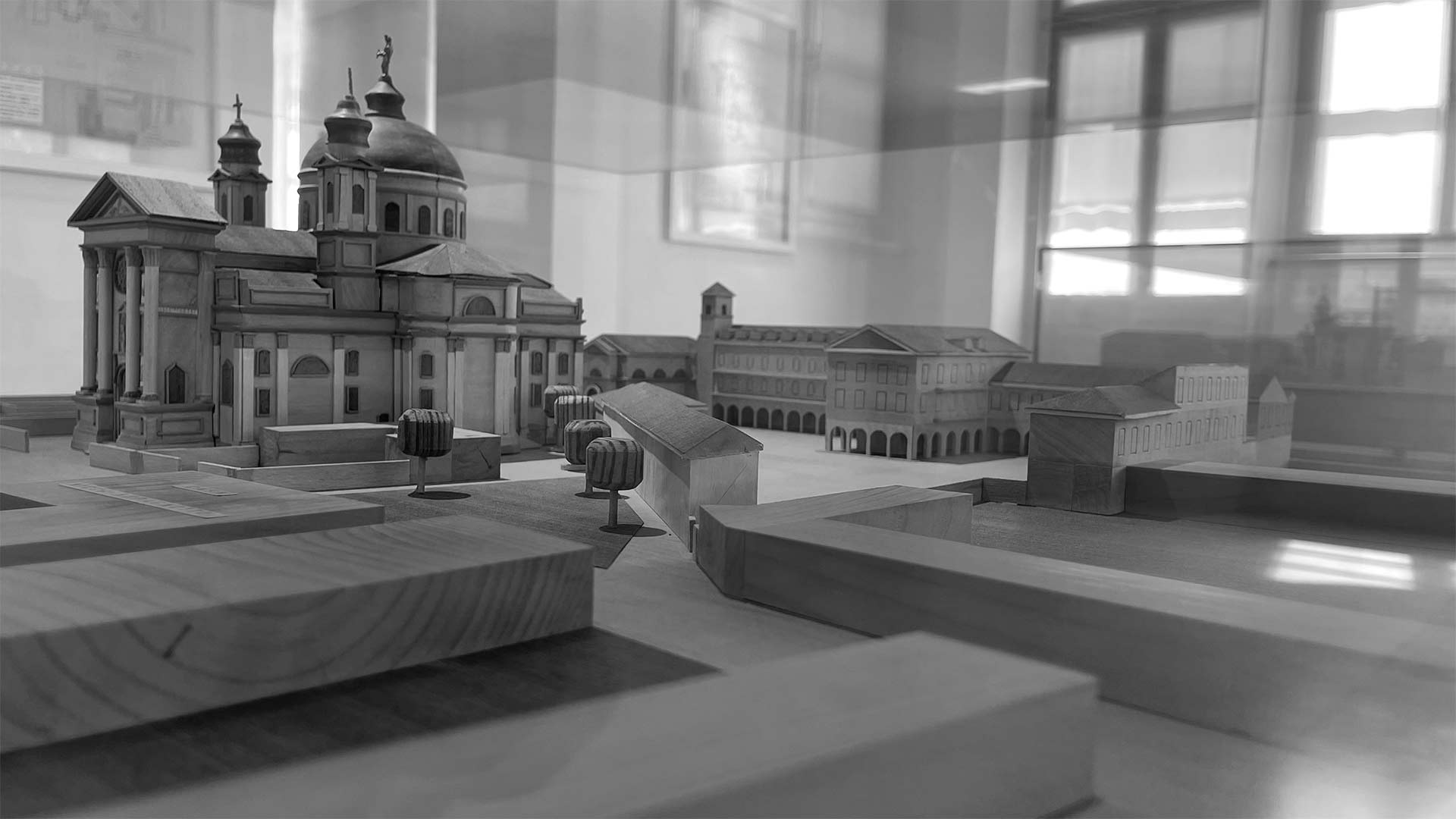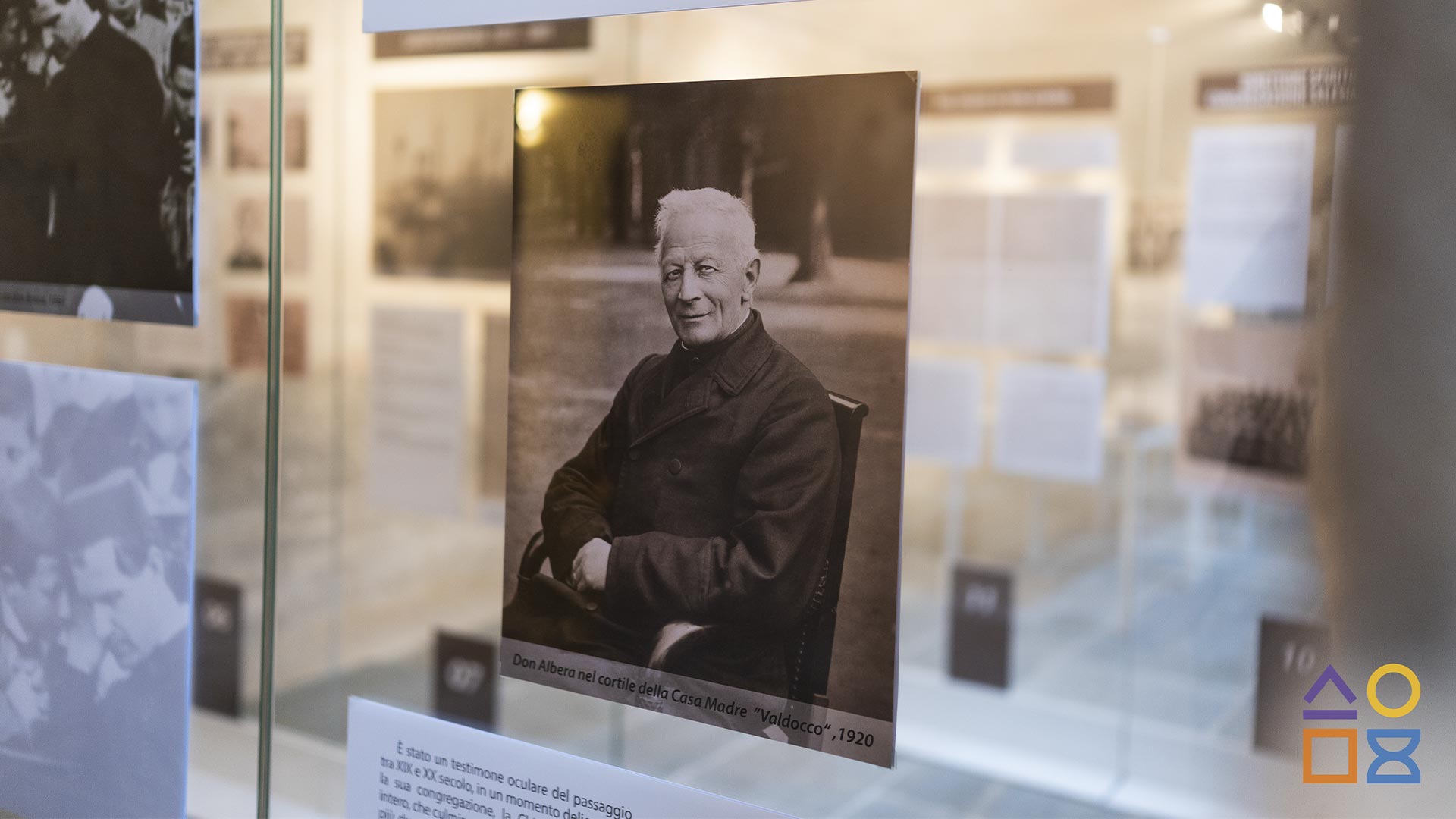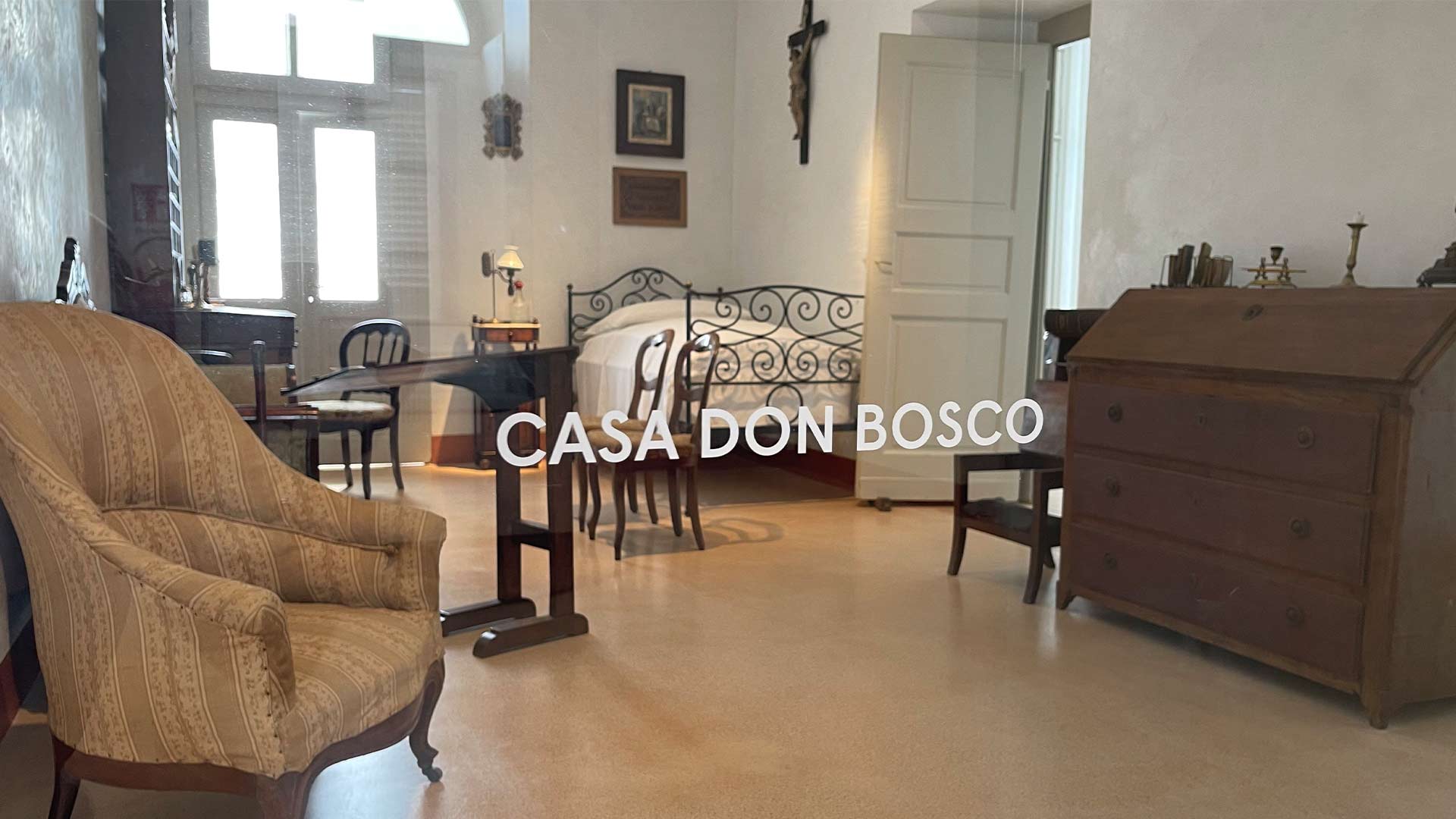
The Museum Spaces.
The historical house of Valdocco where Don Bosco lived and founded his Salesian Oratory has undergone numerous renovations since the 20th century.
The first section to be preserved as a museum after Don Bosco’s death was the four room complex in which the saint lived from 1853 to 1888. These rooms were developed over time, expanding his single room into more adequate quarters. As an act of reverence, the room where Don Bosco passed away has remained unoccupied and unchanged since he passed into eternity.
However, the other three rooms were occupied by his first two successors, Blessed Michael Rua, from 1888-1910, and Fr. Paul Albera, from 1901-1914.
October 1914.
As the Congregation expanded, so did it its organizational needs. In 1912, construction began on a new building to serve as the headquarters for the Salesian General Council. Upon its completion in 1914, Fr. Paul Albera moved into the new wing, vacating once and for all Don Bosco’s rooms.
Since then, Don Bosco’s rooms have been a shrine of sorts. Known affectionately as le Camerette, or “the little rooms” of Don Bosco, they are a perennial expression of gratitude for our holy founder, a testimony to his total self-giving to young people, and a source of inspiration.
According to a 1927 souvenir guide of Valdocco:
«The wing extending into the middle of the courtyard facing the porter’s lodge, bearing a beautiful statue of Mary Help of Christians on the tympanum, leads upstairs to Don Bosco’s Camerette… On the second floor, a small atrium leads to the balcony which, if you follow it to the left, brings you to the Camerette, which are constatnly venerated by pious pilgrims with increasing devotion. The paintings and photographs on the walls take you back to the days in which the Venerable John Bosco lived».
This is the earliest evidence of Don Bosco’s rooms being accessible as part of a museum exhibit.
According to a 1927 souvenir guide of Valdocco:
«The wing extending into the middle of the courtyard facing the porter’s lodge, bearing a beautiful statue of Mary Help of Christians on the tympanum, leads upstairs to Don Bosco’s Camerette… On the second floor, a small atrium leads to the balcony which, if you follow it to the left, brings you to the Camerette, which are constatnly venerated by pious pilgrims with increasing devotion. The paintings and photographs on the walls take you back to the days in which the Venerable John Bosco lived».
This is the earliest evidence of Don Bosco’s rooms being accessible as part of a museum exhibit.
1930s.
This is the earliest evidence of Don Bosco’s rooms being accessible as part of a museum exhibit.
«When Don Bosco was beatified (1929) the house he built and occupied at the Oratory underwent a general renovation to preserve the Camerette’s original and stark simplicity. Through a new, wide staircase, pilgrims and devotees can reach the second floor to visit, in this order: an ante-camera that in the earliest days housed the Oratory’s first library; the four rooms; a balcony overlooking the large recreation courtyard; and a small museum displaying personal objects and writings of Don Bosco».
And so it was that in 1929 the first, formal museum exhibit came to be. The wooden renaissance style display cases built for that exhibit have been fully refurbished and repurposed for the Don Bosco Missions Ethnographic Museum, an integral part of Casa Don Bosco located at the entrance to the Basilica courtyard.
1970s and ’80s.
In the 1970s, new trends in museography led to the first complete renovation of the exhibit area in two distinct phases: 1973-1976 and 1977. This renovation introduced a rudimentary process for the restoration, preservation and cataloguing of noteworthy objects and furnishings. The rooms and their original furnishings were sealed with protective glass and embellished with objects from the first Oratory community and the historic churches of Valdocco.
In 1987, the museum was updated again in preparation for the centenary of the death of St. John Bosco (1988). On that occasion, the first floor was converted into a multimedia theatre in which videos and illustrations showcased the evolution of the Valdocco district from its origins to the present day.
Don Bosco’s Camerette became part of a broader historical, artistic, and spiritual itinerary that incorporated the entire Salesian motherhouse complex, starting at the Basilica (the interior of which was restored between June 2004 and September 2008).
2000.
For the Great Jubilee of 2000, the Camerette underwent yet another major renovation. The museum was transformed into an itinerary exploring Don Bosco’s history and spirituality. Some of the original walls were cut and fitted with windows to allow greater visibility of the historical rooms. Display cases presenting themes related to the saint’s life were also added.
2019 – 2020
THE MUSEUM TODAY
In 2019, a radical rethinking and bold restructuring of the museum culminated in today’s Casa Don Bosco.
The process brought to light a number of evocative underground rooms in the historic Oratory building from the mid-1800s. Some of these rooms are now home to the Museum’s permanent Marian, Liturgical and Devotional Collections, treasures which it acquired from the Basilica and from the Museum of Marian Spirituality and Devotion which was closed in 2010.
A distinguishing feature of Casa Don Bosco Museum is the rigorously restored historical integrity of the building. The original walls have been restored by eliminating windows that had been added over the years. Don Bosco’s bedroom and its furnishings are once again exactly as he had them from 1861-1887.
Other precious objects, including refurbished items and previously unpublished works, have survived the test of time and are on display for the first time.
2019 – 2020
THE MUSEUM TODAY
In 2019, a radical rethinking and bold restructuring of the museum culminated in today’s Casa Don Bosco.
The process brought to light a number of evocative underground rooms in the historic Oratory building from the mid-1800s. Some of these rooms are now home to the Museum’s permanent Marian, Liturgical and Devotional Collections, treasures which it acquired from the Basilica and from the Museum of Marian Spirituality and Devotion which was closed in 2010.
A distinguishing feature of Casa Don Bosco Museum is the rigorously restored historical integrity of the building. The original walls have been restored by eliminating windows that had been added over the years. Don Bosco’s bedroom and its furnishings are once again exactly as he had them from 1861-1887.
Other precious objects, including refurbished items and previously unpublished works, have survived the test of time and are on display for the first time.
Project team.
Casa Don Bosco Museum brings to fruition the tireless dedication of the Salesian Congregation under the leadership of Fr. Ángel Fernández Artime, 10th Successor of Don Bosco.
Welcome to Valdocco, the cradle of the Salesian charism.
This is where the Salesian mission was born.
This is were the Salesian charism was born.
This is where Don Bosco and his mother Margaret welcomed the first homeless children and orphans.
This is where we, the Salesians of Don Bosco, were born.
I am confident that this house will speak to you about the great gift that Don Bosco is for young people and for the Salesian Family all over the world.Don Ángel Fernández Artime
Rector Major, 10th Successor of Don Bosco
Gratitude for the realization of Casa Don Bosco Museum goes to
Fr. Cristian Besso, SDB, and Stefania De Vita, Museum Project Design and Scientific Research
Mr. Massimo Chiappetta, Museography and Artistic Director
Mr. Sergio Sabbadini, Architectural Project
Fr. Mariano Diotto, SDB, Web design and Communications
Ms. Patrizia Andriani, Graphic design
Mediacor Srl, Audiovisual Animation
Martina Lorusso, Logo design




FOLLOW US.
Facebook
Instagram
Youtube
Vimeo
Linkedin
Pinterest
Subscribe to our newsletter.
Receive updates on new exhibits, conferences and events at Casa Don Bosco Museum.